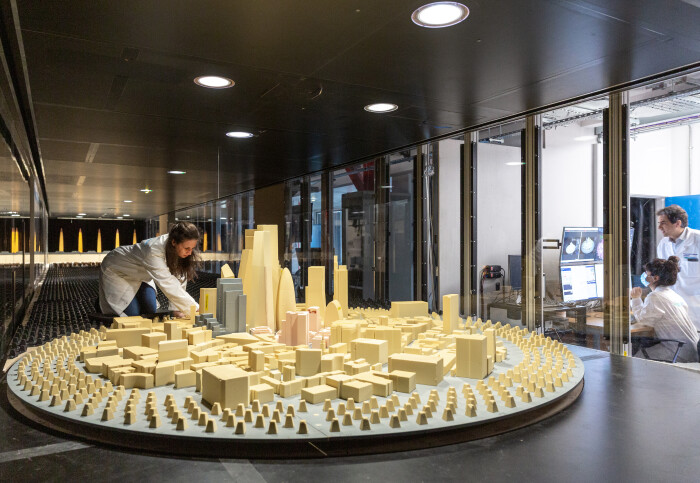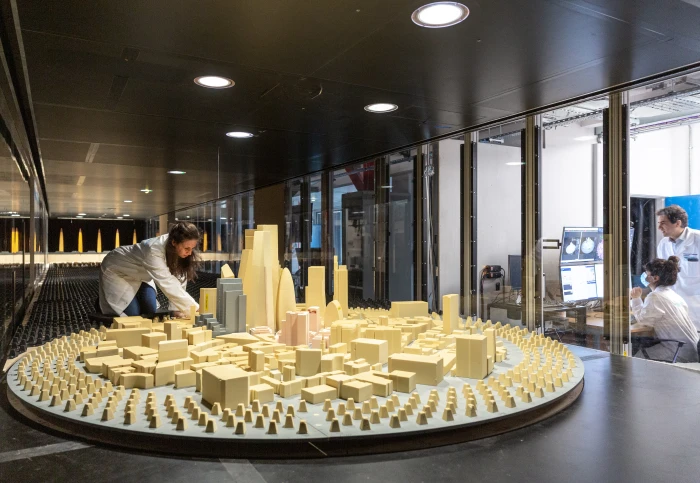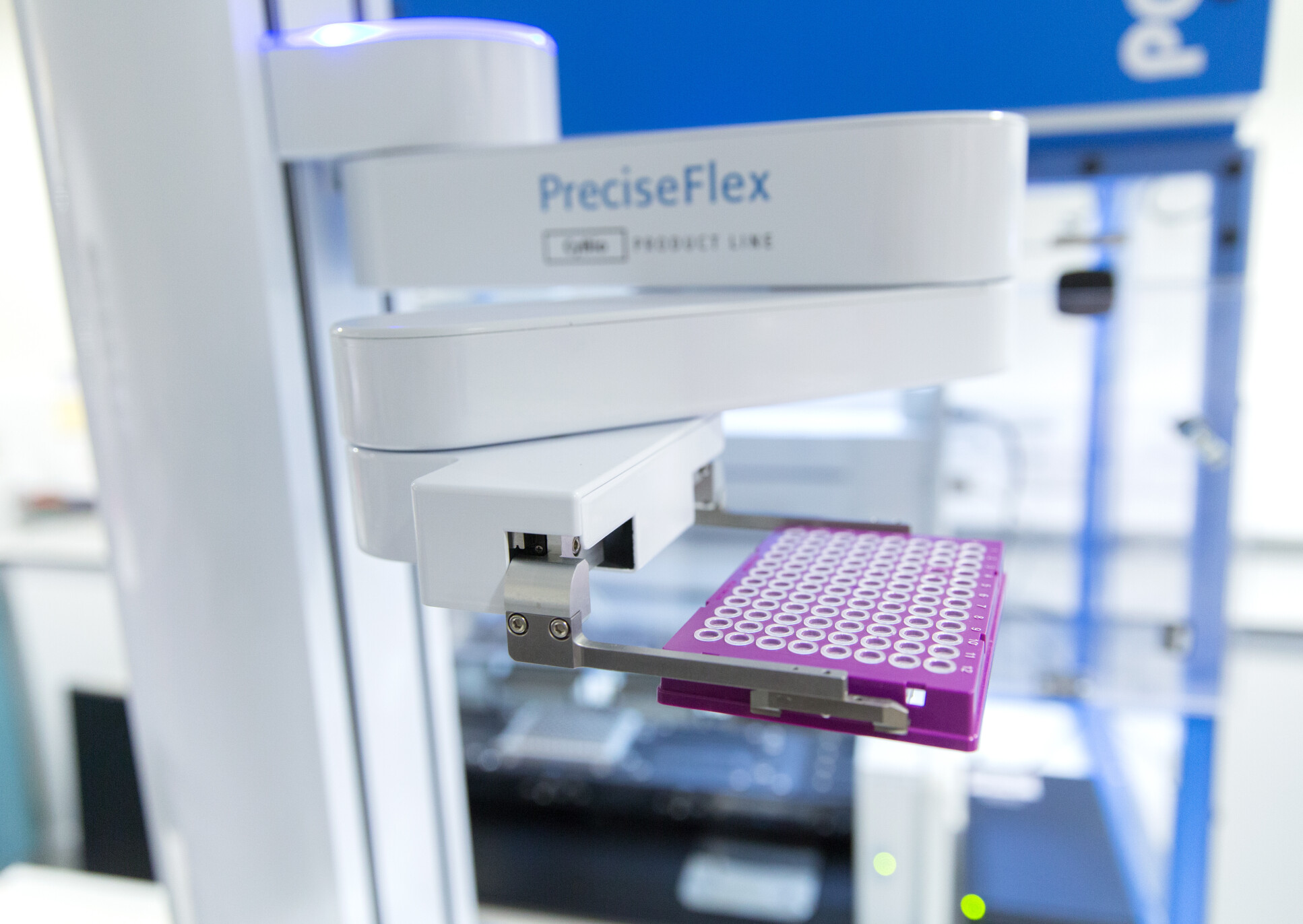Business invited to make the most of Imperial’s research facilities


When not being used for academic research or teaching Imperial’s science and engineering facilities are available to outside users.
It is not just academics who benefit from the world-class science and engineering facilities at Imperial. Companies and other outside organisations can also make use of them, to advance their business ideas or develop new products.
Using the facilities at Imperial means getting access to the skills and expertise of the academics and technicians who work on them day in, day out. Dr Rebecca Andrew Director of Consultancy and Services, Imperial
“Using the facilities at Imperial means getting access to the skills and expertise of the academics and technicians who work on them day in, day out,” says Dr Rebecca Andrew, Director of Consultancy and Services. “In this way, external users can get the most out of their time, and the results they need to move forward.”
They don’t even need to know exactly what facilities Imperial has at its disposal. “It’s enough for them to let us know their requirements, and we will match them with the right people and equipment to help them progress,” Dr Andrew adds.
In the process, companies may also be able to take advantage of the government’s tax relief on R&D, which is available both to small and medium-sized enterprises, and to larger companies.
Help in the early years
Some companies want to take advantage of equipment that is too specialised or too costly for them to buy themselves, but which is essential if they are to develop a new product or service. Startups are in a particularly difficult position, caught in a Catch-22 where they cannot secure investment without proving their concept, but unable to prove their concept without expensive equipment.
This was the case for Better Dairy, which is developing animal-free cheeses using precision fermentation, a method that engineers yeasts so that they make the proteins, fats and sugars found in milk. “At the beginning we needed to make our money go as far as possible, to start getting our minimum viable product together, and that’s where SynbiCITE came in,” says Jevan Nagarajah, co-founder and chief executive of the company.

SynbiCITE is the national synthetic biology accelerator established at Imperial, which combines expertise with a wide range of specialist analytical equipment. “SynbiCITE is a centre for excellence within synthetic biology, so it was the perfect place for us to go. It provided us with lab space and a lot of expertise at that early stage when we didn’t even have a bench to work on. Then, as we developed, it helped with advice and access to specialised equipment.”
Developing devices
Companies developing new microelectronic devices, or other technologies based on innovative materials, can find an equally wide range of support at Royce at Imperial, part of the Henry Royce Institute, the UK’s national institute for advanced materials research and innovation.
The facility contains state-of-the-art equipment from nano-scale thin film deposition through to nanolithography, device patterning, material characterisation and device testing. There is also instrumentation that can analyse a wide variety of surfaces, from scanning electron microscopy to X-ray techniques, and a range of tools for prototyping nano-devices.
Users can follow the whole cycle, or step in at any point along the way to use a particular piece of equipment for a discrete piece of work. In this way, they can quickly produce prototypes for further testing, speeding up commercialisation of their technologies and demonstrating to potential investors the benefits to come. And if they are unfamiliar with the techniques, they are trained on the spot in how to get the most from the equipment Royce has to offer.
Small and medium sized enterprises can benefit from subsidised access, allowing them to work on a project at the facility for three to six months, depending on the hours involved and the funding Royce at Imperial has at the time of the request.
The collaboration with Royce at Imperial has been transformative for Beyond Blood Diagnostics, an Imperial startup developing a device that will allow home monitoring of blood cell levels. In order to build and test designs for its lab-on-a-chip, the company used thin-film deposition, photolithography and femtosecond laser micromachining instruments at Royce, all housed in high-specification clean rooms.
Having access to Royce’s technical knowhow was also important. “We are a small company of just six people,” says Manfredi San Germano, Beyond Blood’s founder and chief executive. “Royce provided expertise that we didn’t have in-house and training that we needed.”
Testing and validation
Other companies need to carry out one-off testing or product validation that does not justify the capital investment for in-house facilities. One example was Sports & Wellbeing Analytics, which turned to Imperial’s HEAD Lab when it needed to validate its instrumented mouthguard, PROTECHT.
The HEAD lab specialises in one issue: traumatic brain injury. It does this with tailor-made software, such as the Imperial College Model of Traumatic Brain Injury, and hardware, such as the Drop Tower Helmet Test Rig. These have been used to test helmets and other protective equipment, to reconstruct and analyse impacts, and to test other wearables.
In the case of the Sports & Wellbeing mouthguards, the experts were able to show that the built-in analytics was able to measure linear and rotational accelerations of the head accurately across a wide range of impact points and velocities. The lab has also helped other SMEs to test novel helmet designs, and was able to recommend areas for improving prototypes.
Building relationships
Imperial’s consultancy and services teams help give organisations easy access to these facilities for both short- and long-term projects, however clients often find themselves returning to use the facilities time and again. For example, biopharmaceutical company Prokarium began working with the London Biofoundry in 2020, taking advantage of its suite of equipment for the automated design, fabrication and validation of large gene constructs and biological systems. This initial work concentrated on protein and strain engineering to underpin a microbial immunotherapy Prokarium was developing for cancer patients.
Then, in 2022, the company decided to take this collaboration further with a multi-year agreement that will help develop its next generation of therapeutic candidates. “This agreement will significantly expand our R&D capabilities and will further deepen our immunotherapy pipeline,” said Kristen Albright, Prokarium’s chief executive.
The Biofoundry, which is part of SynbiCITE, has built novel workflows with many young companies, supporting their proof-of-concept stage, and worked on R&D projects with SMEs, large companies and manufacturers. The sectors it has covered range from therapeutics to nutrition and agriculture, from biofuel to bioplastics, and beyond.
Preparing for the market
Companies also come to Imperial for help later in the development of their products. When it comes to scaling up production of a chemical, the Centre for Rapid Online Analysis of Reactions (ROAR) can apply hardware, software and expertise to support data-rich experimentation in synthetic chemistry. It can rapidly execute and analyse chemical reactions, and then provide solutions to optimise reaction efficiency, selectivity, and robustness. ROAR also works with equipment manufacturers to develop new technologies for chemical synthesis, reaction analysis, laboratory automation and optimisation.
The same flexibility can be found in the Lung Development and Repair Group, part of the National Heart and Lung Institute, which has devised a highly effective model to track lung repair. The Acid Injury Repair (AIR) model allows researchers to subject an isolated area of a living lung tissue to acid damage, then observe the tissue repair process under a range of conditions. It also preserves tissue-resident macrophages, offering an indication of immune response.
This model can be used for early-stage studies of small molecules and growth factors to drive repair, but can equally accommodate drug testing, from pre-clinical models to phase II first-in-man trials.
“The AIR Model has allowed us to work with much greater control at all levels of drug development and research, whether we’re looking to affect signalling pathways, searching for new pro-repair factors or simply following cell behaviour in damaged tissue,” says Dr Charlotte Dean, head of the group. “We’re excited to apply it in support of clients and partners in industry and wider research fields.”
A class of their own
A final reason that companies are drawn to Imperial’s facilities is that they are unique. This is the case for the 10x5 wind tunnel in the Department of Aeronautics. Offering two test sections, one 3m x 1.5m, and the other, nearly 6m x 3m, and fitted with various specialised rigs, development work using the tunnel has led to some spectacular improvements in the aerodynamic performance of buildings, sports stadia, wind farms, aircraft, large ships, and racing cars. As a result, the Imperial wind tunnels have been used extensively by major civil structural engineering firms, civil wind engineers, aircraft manufacturers, and Formula 1 teams.
The Department has six other wind tunnels, ranging in capability, test section size and speed, from a few metres per second up to Mach 9. The tunnels are complemented by a range of highly sophisticated instrumentation for data acquisition, measurement and diagnostics. They have been used by clients to model wind turbines, to calibrate wind speed sensors, and to assess vehicle components and sporting equipment.
To find out more, contact Imperial Consultants, who can help you access university facilities on a commercial basis – whether it’s for one-off product analysis, or regular repeat testing. Other Enterprise services include the Industry Partnerships and Commercialisation team, who can help you collaborate with the university on academic research.
Article text (excluding photos or graphics) © Imperial College London.
Photos and graphics subject to third party copyright used with permission or © Imperial College London.
